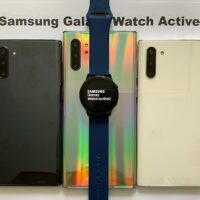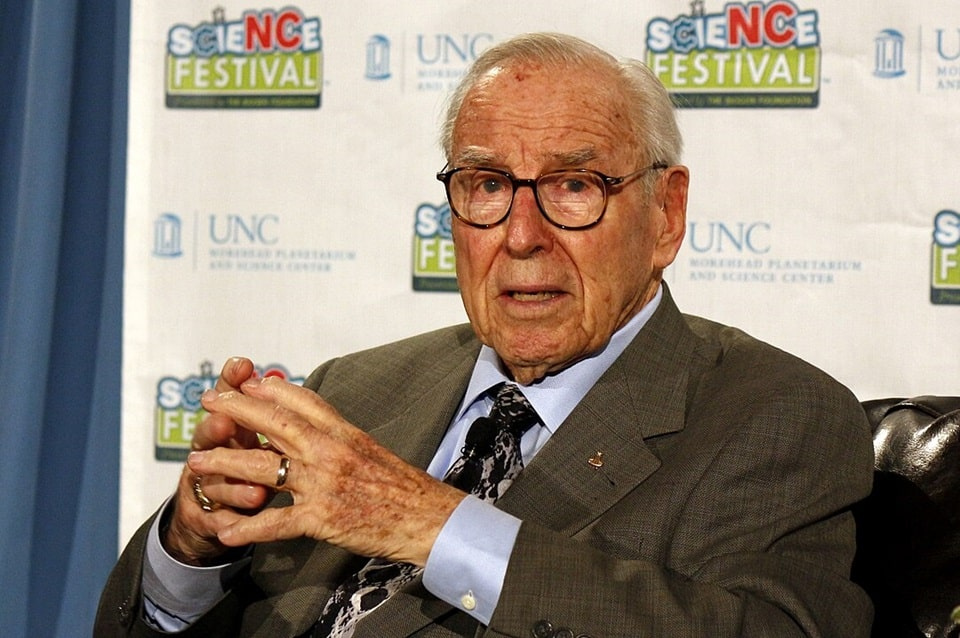
The world recently mourned the passing of James Arthur “Jim” Lovell, a true titan of American space exploration, who died at the age of 97. Lovell’s name is synonymous with quiet confidence and extraordinary leadership under pressure, qualities that were never more evident than during the harrowing flight of Apollo 13. While many remember him for his famous—and slightly misquoted—line, “Houston, we’ve had a problem,” his life was a tapestry of historic firsts, unwavering perseverance, and a deep-seated commitment to pushing the boundaries of human potential. His death has prompted a global reflection on his remarkable career, reminding a new generation of the defining moments of the space race and the incredible heroism of the men who ventured into the unknown.
Lovell’s journey to the stars was not a foregone conclusion. It was a path marked by determination and resilience. He was a man who, after being told “no,” simply tried again, a trait that defined his character long before he was ever an astronaut. His life story, from a young boy fascinated by rocketry to a celebrated naval aviator and finally a four-time space traveler, is a powerful testament to the power of a dream and the fortitude to see it through. He was a man who embraced risk but always measured it, and in doing so, he became a pillar of the early spaceflight program, as so eloquently described by his colleagues and historians in the wake of his passing.

Early Life and the Path to NASA
Born in Cleveland, Ohio, on March 25, 1928, Jim Lovell’s early fascination with flight began in his youth, building model rockets and dreaming of the skies. His path to becoming an astronaut was anything but straightforward. After his first application to the U.S. Naval Academy was unsuccessful, he reapplied and was accepted. He graduated in 1952, the same day he married his high school sweetheart, Marilyn Gerlach. His naval career saw him fly F2H Banshee night fighters and become a highly-regarded test pilot, a role that demanded a unique blend of courage, precision, and technical skill. This foundation in naval aviation and his work at the Naval Air Test Center prepared him for the rigors of the space program in a way that few others could replicate. He was known for his calm demeanor, a trait that would serve him and his crewmates well in a future crisis.
A comparative look at his early career highlights his unique journey:
| Career Milestone | Details of Jim Lovell’s Path | Significance |
| Naval Academy | Initially rejected, reapplied, and graduated in 1952. | Demonstrated early perseverance and dedication. |
| Test Pilot Training | Graduated at the top of his class from the Naval Air Test Center. | Refined his technical skills and cool-headed approach. |
| Astronaut Selection | Failed to make the Mercury Seven due to a high bilirubin count, but was later selected in the second group of astronauts. | Proved that a temporary setback was not an obstacle to achieving his dream. |
| Space Missions | Flew four times, setting records for time in space and becoming the first to fly to the Moon twice. | Solidified his legacy as one of NASA’s most accomplished and experienced astronauts. |
His initial rejection from NASA’s Mercury Seven astronaut class due to a high bilirubin count was a momentary setback. But a few years later, when NASA began recruiting its second group of astronauts for the Gemini and Apollo programs, Lovell applied again and was accepted in 1962. This group, often referred to as “The New Nine,” included several other future legends like Neil Armstrong and Pete Conrad. Lovell’s career was set on a new trajectory, one that would take him further from Earth than any human had ever gone before. The Naval History and Heritage Command details his decorated service and astronaut selection, offering a glimpse into the foundational years that shaped his character.
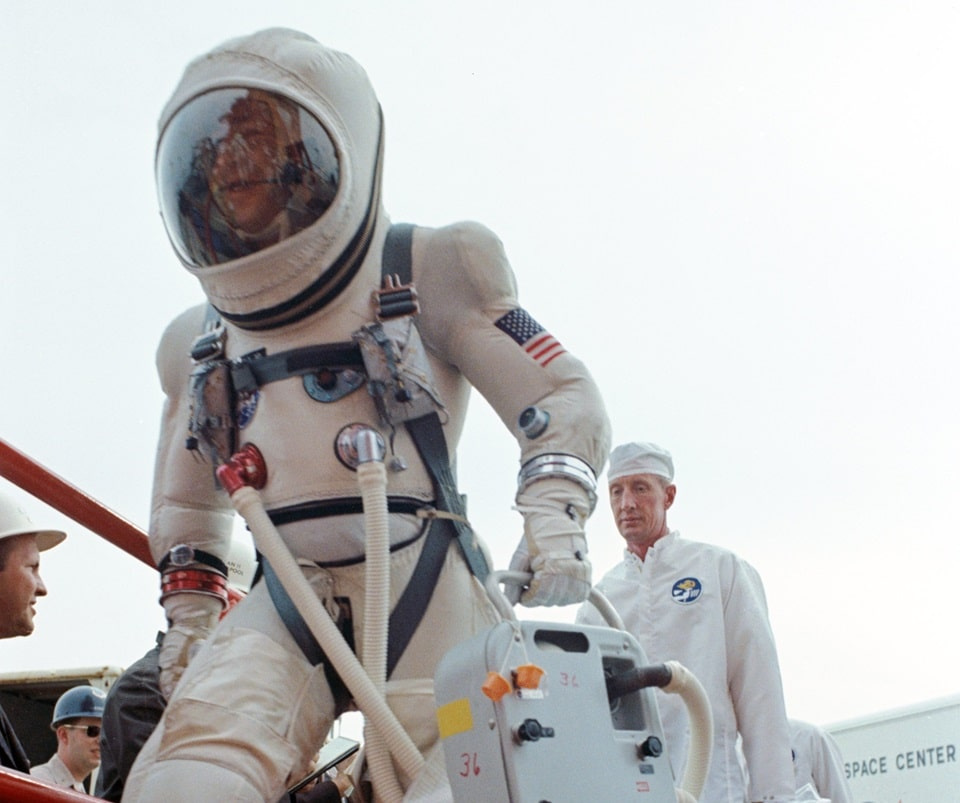
The Gemini and Apollo Missions: Charting a Course into the Unknown
Lovell’s NASA career was marked by a series of missions that were crucial stepping stones to the lunar landings. He first flew into space on the Gemini 7 mission in 1965, a record-setting flight with Frank Borman that lasted nearly 14 days. This mission was a landmark achievement, not only for its endurance but also for its successful rendezvous with Gemini 6, proving that two spacecraft could maneuver and meet in orbit. Lovell’s second Gemini mission, Gemini 12, further honed the techniques of rendezvous and spacewalks, essential skills for the upcoming Apollo program. By the time of his second flight, he had already accumulated more hours in space than any other astronaut, a testament to his experience and reliability.
But it was the Apollo program that cemented his place in history. As command module pilot for Apollo 8 in 1968, Lovell, along with Borman and William Anders, became the first humans to ever fly to and orbit the Moon. This mission, launched in the midst of a turbulent year on Earth, was a moment of profound unity and hope. The famous “Earthrise” photograph, taken by the crew, became a powerful symbol of our planet’s fragility and beauty. Lovell’s own words from the mission, imagining himself as “some lonely traveler from another planet” looking back at Earth, resonated deeply with people around the globe. This mission, which proved the capabilities of the Saturn V rocket and laid the groundwork for the Apollo 11 moon landing, may be as significant as the landing itself. A NASA tribute following his death highlighted his critical role in these pioneering flights.
Key moments from his first three missions include:
- Gemini 7: Set a space endurance record of nearly 14 days, proving humans could withstand long-duration spaceflight.
- Gemini 7 & 6 Rendezvous: Executed the first successful rendezvous of two manned spacecraft in Earth orbit.
- Gemini 12: Further refined rendezvous and docking procedures, which were essential for the Apollo missions.
- Apollo 8: The first mission to carry humans beyond Earth’s gravitational influence and into lunar orbit.
- The Earthrise Photo: The iconic image from Apollo 8 that provided a new perspective on our planet and became a symbol of the environmental movement.
- Christmas Eve Broadcast: The crew’s reading from the book of Genesis captivated a global audience and offered a message of peace and hope.
Apollo 13: A Triumphant Failure
Of all his missions, none defined Lovell more than Apollo 13. Launched on April 11, 1970, the mission was intended to be the third lunar landing. However, as the spacecraft, named Odyssey, was 200,000 miles from Earth, an oxygen tank in the service module exploded. The moment of crisis was captured by a series of transmissions between Lovell and Mission Control. The now-famous line, often misremembered as “Houston, we have a problem,” was actually, “Houston, we’ve had a problem.” This slight but crucial difference underscores the calm, collected nature of the astronauts, who were reporting an event that had already occurred and was now a reality to be managed. His immediate reaction was to report what he saw—”It looks to me, looking out the hatch, that we are venting something… a gas of some sort.”
The explosion crippled the command module, leaving the crew with severely limited power and oxygen. The mission to land on the Moon was immediately aborted. The new mission was simply survival. Lovell and his crew, Fred Haise and Jack Swigert, worked tirelessly with a team of brilliant engineers and flight directors on the ground to turn the lunar module, Aquarius, into a lifeboat. The crew’s ability to remain calm and their ingenuity, combined with the tireless problem-solving of Mission Control, turned what could have been a national tragedy into a stunning example of human resolve. They battled freezing temperatures, rising carbon dioxide levels, and a desperate lack of power. The mission became a live television event, with millions around the world holding their breath and hoping for their safe return. The Guardian’s tribute recounts this harrowing experience, highlighting how Lovell’s leadership transformed a failure into a victory.
The “successful failure,” as Lovell later called it, was a showcase of leadership and teamwork. The Apollo 13 crew, in conjunction with the ground team, had to engineer solutions on the fly, using only the limited resources they had. This included creating an improvised carbon dioxide filter using materials readily available in the spacecraft, a scene that was powerfully depicted in the 1995 film “Apollo 13.” This mission demonstrated not only the technical prowess of NASA but also the human spirit’s capacity to overcome seemingly impossible odds. For his leadership during the crisis, Lovell was awarded the Presidential Medal of Freedom, the nation’s highest civilian honor. Despite the triumph, Lovell would later say that his one true regret was the loss of his chance to walk on the Moon, a poignant reminder of the personal cost of the mission.
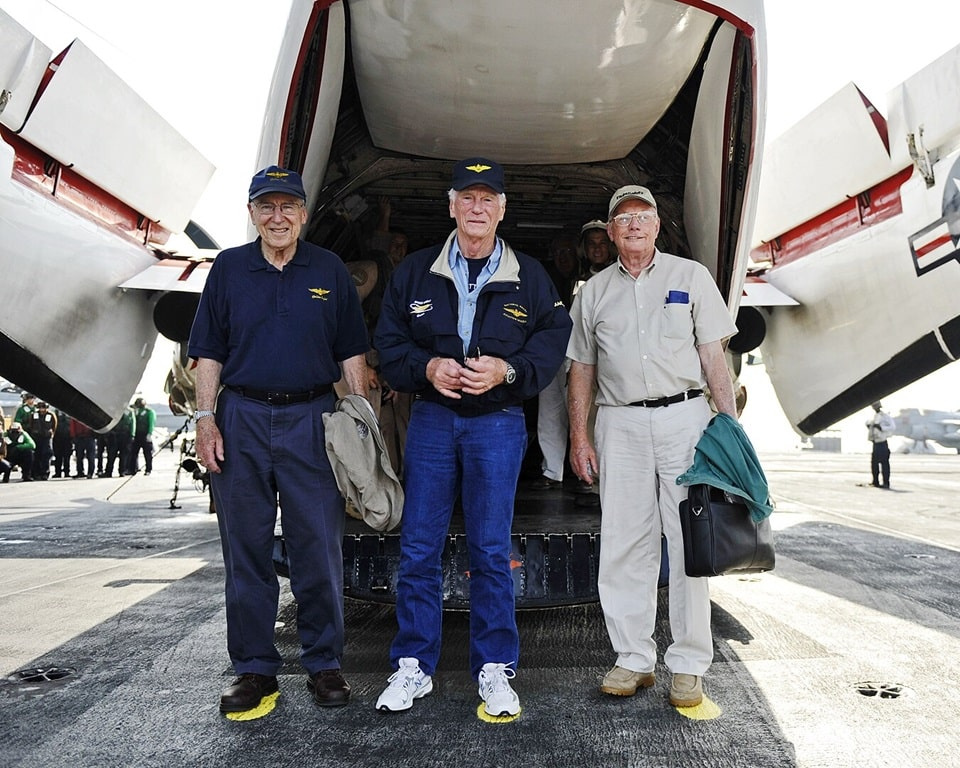
Life After NASA and the Legacy of Apollo 13
After retiring from the Navy and the space program in 1973, Lovell began a new chapter as a businessman. He held various executive positions and later, with his family, owned a restaurant named Lovell’s of Lake Forest in suburban Chicago, which became a local institution. His post-NASA career was a testament to his versatility and his ability to apply his skills in leadership and problem-solving to a new field. However, his connection to the space program never faded. He remained a public advocate for space exploration, often expressing his hope that NASA would receive the funding needed to be bold once again.
Lovell’s story found a new and broader audience with the release of the 1995 film “Apollo 13,” directed by Ron Howard and starring Tom Hanks as Lovell. The movie, which was based on Lovell’s co-authored book “Lost Moon: The Perilous Voyage of Apollo 13,” brought the dramatic events of the mission to a new generation. Lovell himself had a cameo in the film, playing the captain of the recovery ship USS Iwo Jima. The film’s accuracy and powerful portrayal of the mission’s tension and triumph were a point of pride for Lovell, who often said the movie captured the essence of the experience perfectly. The film cemented his image in the public consciousness as the embodiment of an American hero. Parade’s recent article on his death highlights his relationship with the film and Tom Hanks.
The legacy of Jim Lovell is multi-faceted, encompassing more than just his most famous mission. It includes:
- A Role Model for Perseverance: His journey, marked by initial rejection and then unprecedented success, serves as a powerful inspiration.
- A Symbol of Leadership: His calm and decisive actions during the Apollo 13 crisis defined a generation’s understanding of what it means to be a commander.
- An Advocate for Exploration: He remained a passionate supporter of NASA’s mission, encouraging new generations to pursue careers in science and engineering.
- A Family Man: His long and loving marriage to Marilyn, who passed away in 2023, and his dedication to his four children, demonstrated the importance of a strong personal life alongside a monumental career.
- A “Successful Failure”: He gave the world a new way to look at a setback, proving that even in failure, there can be a profound and lasting success that inspires millions.
Tributes and a Lasting Impact
In the hours and days following his death, tributes poured in from across the globe. NASA Administrator Sean Duffy praised Lovell’s “character and steadfast courage” and noted that his life’s work “inspired millions of people across the decades.” The Lovell family’s statement described him not just as an astronaut, but as “Dad, Granddad, and the Leader of our family” and “our Hero.” They spoke of his “unshakeable optimism” and his ability to make everyone feel they could “do the impossible.” These personal tributes paint a picture of a man who was not only a legend in space but also an anchor for his family and a source of inspiration for all who knew him.
Lovell’s influence on space exploration and popular culture is undeniable. The movie “Apollo 13” brought his story to millions, ensuring that his legacy would endure far beyond the confines of history books. The mission itself became a benchmark for problem-solving and teamwork under extreme duress, a case study still taught in engineering and leadership courses today. His career spanned from the pioneering Gemini missions to the height of the Apollo program, making him one of the most experienced and respected astronauts of his time. He was a man who lived a life of purpose, and his accomplishments continue to shape our understanding of what is possible. An extensive obituary from the Associated Press details his life’s work and legacy, capturing the essence of his impact on the world.
Comparing the Real Mission to the Movie
While the 1995 film “Apollo 13” is celebrated for its realism, it’s worth noting some key differences between the movie and the real-life events. These comparisons offer a deeper appreciation for both the historical mission and the cinematic adaptation.
| Element | The Movie “Apollo 13” | The Real Apollo 13 Mission |
| “Houston, we have a problem” | Tom Hanks as Lovell utters the now-famous line. | The line was first spoken by Jack Swigert (“Okay, Houston, we have a problem here”) and then repeated by Lovell (“Houston, we’ve had a problem”). |
| Mission Control Tension | The film depicts a highly tense and emotional Mission Control. | While tense, the real Mission Control was defined by methodical, calm problem-solving and professionalism. |
| Role of the Media | Shows intense media scrutiny and a global audience glued to the story. | The mission’s drama was real, but the widespread media attention was a consequence of the crisis, not its cause. |
| The Astronauts’ Mood | The film shows some friction and intense discussions among the crew. | The crew maintained a remarkable level of camaraderie and calm focus throughout the ordeal. |
These distinctions do not diminish the film’s quality but rather highlight the unique challenges and realities of the actual spaceflight. The core message of teamwork and leadership remains true to both the movie and the historical record. Britannica’s biography provides a fact-checked account of the mission, contrasting it with common portrayals.
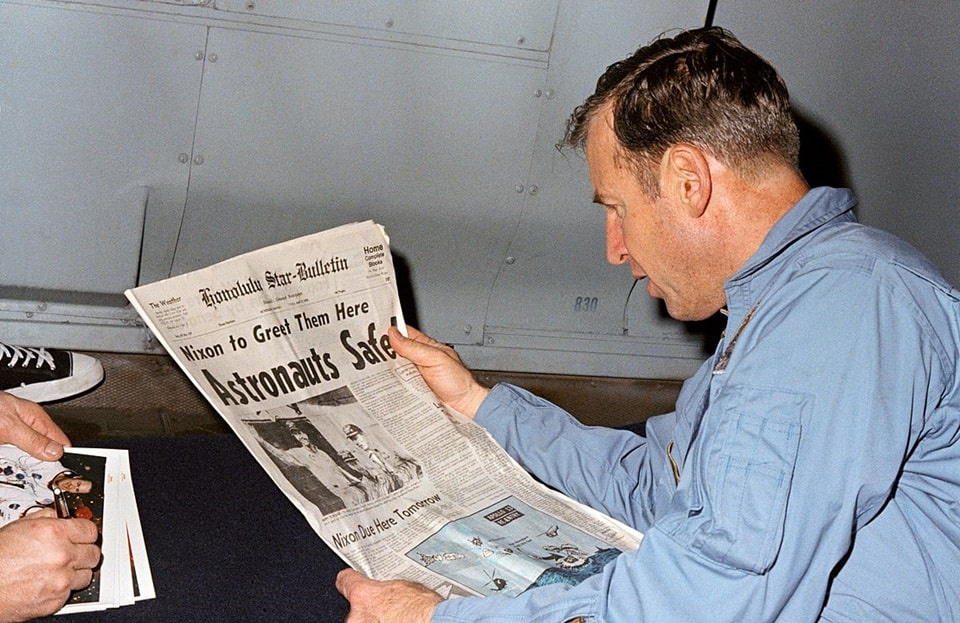
Jim Lovell’s Perspective on His Spaceflight Career
Throughout his later years, Jim Lovell was a sought-after speaker and commentator on the history of space exploration. He often reflected on his career with a mix of pride, humility, and a clear-eyed view of the challenges. He believed that the space program’s greatest legacy was its ability to inspire children and foster an interest in science, technology, engineering, and mathematics (STEM). He lamented that the nation had not been more “bold” in its continued human exploration of the universe, a sentiment that resonated with many in the scientific community.
Lovell’s own words provide the most powerful insight into his experience:
- On Apollo 8: “What I keep imagining, is if I am some lonely traveler from another planet, what I would think about the Earth at this altitude, whether I think it would be inhabited or not.”
- On Apollo 13: “Not that we accomplished anything, but a success in that we demonstrated the capability of (NASA) personnel.”
- On his greatest regret: “The loss of the opportunity to walk on the moon is my one regret.”
- On facing crises: “I don’t worry about crises any longer… I say, ‘I could have been gone back in 1970. I’m still here. I’m still breathing.'”
These reflections reveal a man who was deeply impacted by his experiences but not defined by them. His journey was a testament to the fact that while technology can fail, human ingenuity, leadership, and a steadfast spirit can overcome even the most dire circumstances. Lovell’s contributions to space exploration are foundational, and his character serves as a timeless example of how to lead through adversity. Fox News’ tribute included many of these key quotes, capturing the essence of his public commentary.
A Final Word on a Hero
Jim Lovell’s life was a grand adventure that took him from the cornfields of the Midwest to the far side of the Moon and back. He was a man who embodied the bold resolve and optimism of a nation reaching for the stars. His passing marks the end of an era, a final salute to one of the last living heroes of a program that captivated the world. His legacy, however, is not confined to the past. It lives on in the stories of the missions, in the inspiration he provided to generations of scientists and engineers, and in the enduring lessons of leadership and perseverance that he so humbly taught. He was truly a hero in every sense of the word, a man who stared into the face of a crisis and found a way home. He will be deeply missed, but his memory will continue to shine brightly, a beacon for all who dare to dream and to explore.
The space community, and indeed the world, is now left with the collective memory of a man who once put his thumb up and covered the entire Earth, a man who saw the fragility of our planet from a perspective few ever will. His life was a testament to the extraordinary things that can be achieved when humanity works together to solve a problem. It is a story that will be told for generations to come, a story of courage, a story of leadership, and a story of a mission that, in its failure, became one of history’s greatest successes.




